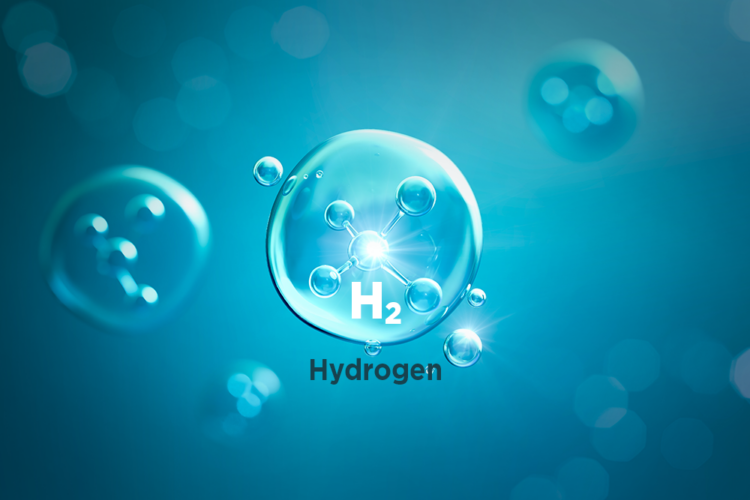
Introduction
Picture this: you’re handed a single compound, and the question isn’t how much it weighs or how many grams are involved—but how many atoms are tucked inside.
This might seem abstract at first, but it’s one of the most practical skills you can master in stoichiometry.
Why?
Because real-world chemistry doesn’t always begin with grams or moles.
Sometimes, the problem gives you particles—molecules, atoms, or ions—and expects you to dig into the structure to reveal what’s truly there.
In fact, today’s example does just that.
Specifically, we’ll figure out how many hydrogen atoms are present in 50 molecules of a compound known as C₄H₄S₂.
So, let’s break this down together.
Step 1: Understand the Chemical Formula
The first step is knowing how to read the formula C₄H₄S₂.
This formula tells us what elements are in the molecule—and how many atoms of each.
- C₄ means there are 4 carbon atoms.
- H₄ means there are 4 hydrogen atoms.
- S₂ means there are 2 sulfur atoms.
So, in one molecule of C₄H₄S₂, we already know there are exactly 4 hydrogen atoms.
Let’s hold onto that number as we scale things up.
Step 2: Multiply by the Number of Molecules
Now that we know there are 4 hydrogen atoms per molecule, the next question becomes simple.
How many total hydrogen atoms are in 50 molecules of this compound?
Just multiply.
Hydrogen atoms = Number of molecules × Hydrogen atoms per molecule
Hydrogen atoms = 50 × 4 = 200 hydrogen atoms
That’s your final answer: 200 atoms of hydrogen are present in 50 molecules of C₄H₄S₂.
Simple, right?
But let’s make sure we understand the reasoning behind it—so you don’t get tripped up by variations of this question later.
Step 3: What Are You Actually Counting?
In questions like this, it’s easy to overthink.
Many students get distracted by the presence of other elements like carbon or sulfur. But if the question asks for hydrogen atoms, you only care about the H in the formula.
Furthermore, You don’t need to calculate molar masses or involve Avogadro’s number—because this is a molecule-level calculation, not a mole-level one.
You’re counting individual molecules and using the structure of that molecule to determine what’s inside.
Think of each molecule as a Lego set. If every set has 4 red bricks (hydrogens), and you have 50 sets, then you have 50 × 4 = 200 red bricks.
The same logic applies here.
Step 4: Common Mistakes Students Make
Let’s talk about some traps that students often fall into with questions like this.
Mistake 1: Using Avogadro’s Number for Simple Molecule Counts
Avogadro’s number only applies when you’re dealing with moles, not individual molecules. This question never mentioned moles—so leave that number out of it.
Mistake 2: Counting the Wrong Atom
Some students mistakenly count all atoms in the compound. But this question is only about hydrogen, so you must isolate that from the formula.
Mistake 3: Misreading the Formula
C₄H₄S₂ doesn’t mean 4 + 4 + 2 = 10 atoms of hydrogen. It means only the H₄ matters for this question.
Mistake 4: Thinking It’s a Complex Calculation
Additionally, this is not a conversion or mass problem. It’s simple multiplication: how many atoms per molecule × how many molecules.
Step 5: Real-Life Use Case of Molecular Atom Counting
You might wonder: why does counting atoms in a molecule even matter?
Well, consider this:
To begin with, pharmaceutical chemists count active hydrogen atoms in a molecule to predict how that molecule will behave in the human body. Many reactions—especially in acid-base chemistry—depend on hydrogen’s presence.
Additionally, materials scientists track hydrogen atoms to understand and design the stability, shape, and energy of polymers and proteins. Knowing the atom count helps them model the 3D structures of complex compounds.
Furthermore, environmental chemists analyze hydrogen atoms to predict how pollutants break down or how greenhouse gases like methane (CH₄) interact with sunlight and other atmospheric chemicals.
So, in the grand scheme, even though this may seem like a textbook exercise, you’re sharpening a skill applied across cutting-edge industries.
Step 6: Let’s Flip It — Bonus Challenge
Let’s say the question were reversed:
You have 200 hydrogen atoms. How many molecules of C₄H₄S₂ is that?
You’d just do the reverse:
Molecules = Total atoms ÷ Atoms per molecule
Molecules = 200 ÷ 4 = 50 molecules
Same math. Just flipped.
Eventually, this flexibility transforms you from a student into a confident problem solver.
Step 7: How to Practice and Reinforce This Skill
Here’s the good news.
You don’t need hundreds of practice problems to master this.
Instead, you need to repeatedly practice variations of this question in a targeted way.
Try these:
- How many hydrogen atoms are in 100 molecules of C₂H₆?
- How many oxygen atoms are in 25 molecules of H₂O?
- If one molecule of glucose is C₆H₁₂O₆, how many hydrogen atoms are in 12 molecules?
Each one follows the same method: extract → multiply → answer.
That’s how you develop deep confidence.
Final Wrap-Up
Let’s recap.
The compound C₄H₄S₂ contains 4 hydrogen atoms per molecule.
So when you have 50 molecules, you simply multiply.
4 × 50 = 200 hydrogen atoms
As a result, this kind of question helps you break big problems into manageable parts, focus on what’s relevant, and ignore distractions.”
It introduces one of the simplest forms of stoichiometry—but also one of the most important to master early on.
Want to Feel 100% Ready for Your Chemistry Tests?
Head over to copychemistry and take your understanding to the next level.
Moreover, our guided lessons don’t just give you answers—they help you build intuition. You’ll find structured worksheets, expert video breakdowns, and step-by-step problem sets that are tailored to real exam questions.
Need help with topics like moles, atoms, conversions, or reaction predictions? We’ve got you covered.
Chemistry doesn’t have to be confusing or boring.
When it’s taught right, it just makes sense.
